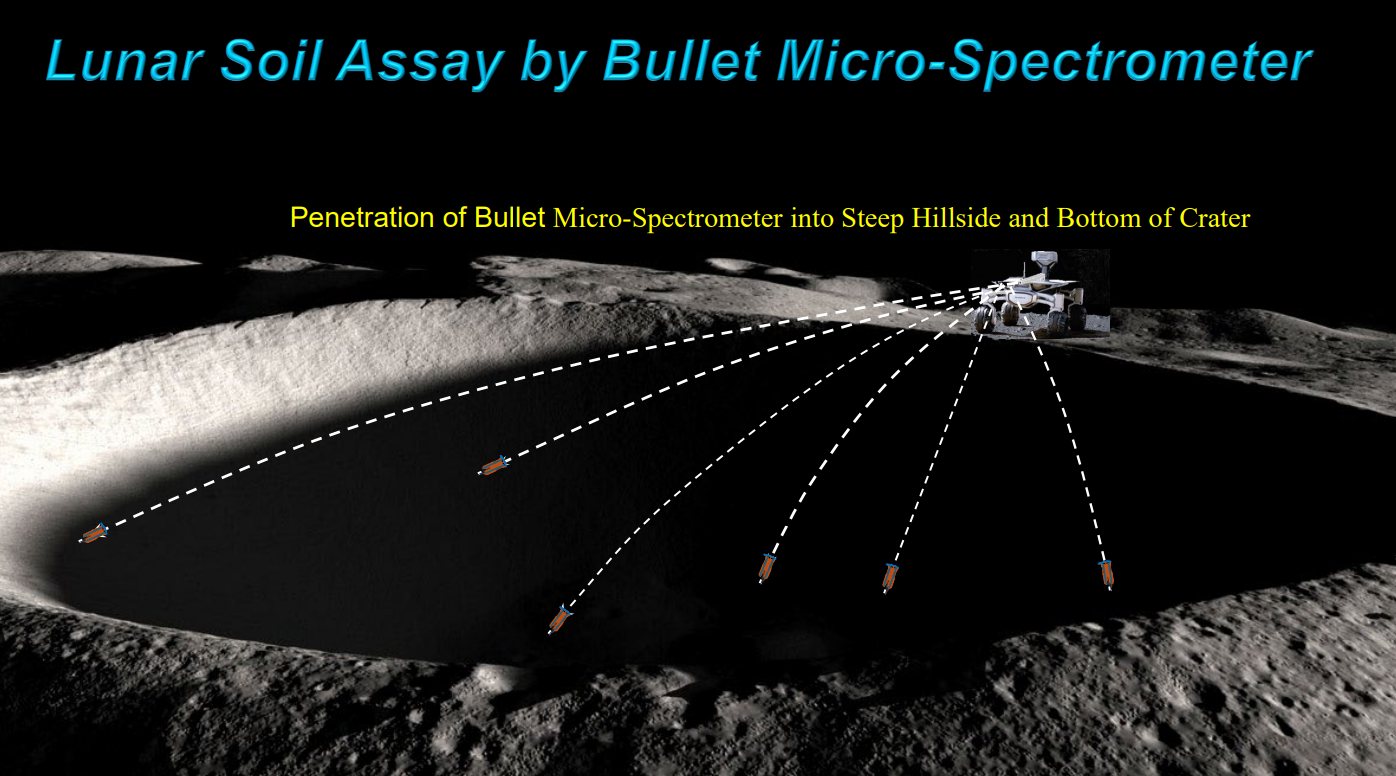NASA’s Langley Research Center has finally presented a plan to learn about the Moon and Mars, by shooting them with specially designed bullets.
We can learn a lot about the Moon through telescope observations, and far more from going there ourselves and taking samples. But nothing, according to a proposed NASA project, quite beats going there to just start blasting.
While a lot of Mars and the Moon are accessible to rovers and human explorers, certain areas – like craters with steep embankments – are a lot more challenging to access. This is unfortunate, as future missions to the Moon and beyond may rely on the mining and excavations of minerals present there.
“To address this shortcoming, a new device concept offers a shootable micro-spectrometer bullet for direct access to the areas with geologically ragged formations and extreme environments,” a paper from the Langley Research Center explains, introducing the concept. “The bullet-like, expendable micro-spectrometer can penetrate into soil to spectrally identify the components of soil, such as water, He-3, or other minerals. The signals from the soil assay data are transmitted to a mother station through a telemetry system.”

Try to pretend this isn’t awesome, we dare you.
Image credit: NASA
Spectroscopy has been used to study space objects for many years, though we did not realize what we were seeing at first. In 1802, William Wollaston realized that light from the Sun split into its component colors by a prism showed black lines between some of those colors, which was then further analyzed by Joseph von Fraunhofer.
Wollaston believed that the dark lines represented natural distinction between the colors, but later German physicist Gustav Robert Kirchoff and chemist Robert Wilhelm Eberhard Bunsen figured out that they were caused by objects absorbing light in that particular spectrum. By looking at the particular lines that are missing, you can figure out what elements the light has encountered on its path to you.
Fraunhofer diffraction has been used to study objects that are far away from the detector, but up close it is possible to use a different kind of diffraction known as Fresnel diffraction, and it is this that will be used in the bullets.
The concept, which was presented at the 37th International Geological Congress 2024, could also be used to study asteroids, or any space object you are chemically interested in and can feasibly use as target practice.
“This [Langley Research Center] developed micro-spectrometer bullet consists of micro-spectrometer optics with an all-imbedded, burst-mode, light-emitting-diode ultraviolet (LED UV) light source, a super-capacitor with control electronics, and telemetry electronics,” the team adds. “Prototypes have been fabricated to demonstrate a spectral assay of soil components.”
While a cool idea, the concept is not quite ready yet. But hopefully, one day, we will learn about lunar and Martian rocks through pointing a gun and firing at them.
The concept was presented at the 37th International Geological Congress 2024.
Source Link: Why Is NASA Hoping To Shoot Bullets At The Moon And Mars?